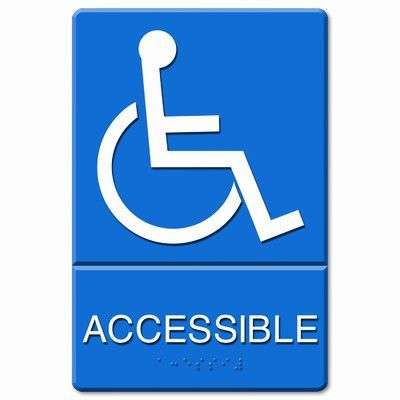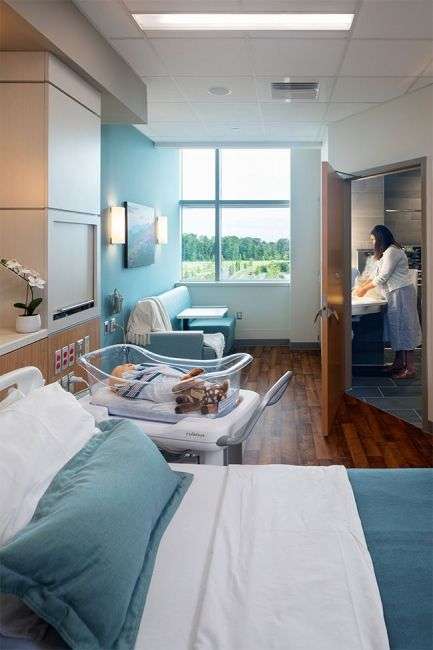
“Hospital Infrastructure Investment: A Guide to Profitable Funding”
January 4, 2025
MEP in Hospital Construction: Vital for Safety, Comfort & Function
January 8, 2025Ensuring Accessibility and Inclusivity in Healthcare Facilities
When designing a hospital, it’s essential to prioritize accessibility for all patients, visitors, and staff members. The Americans with Disabilities Act (ADA) sets clear guidelines to ensure that public spaces, including healthcare facilities, are accessible to individuals with disabilities. ADA compliance in hospital design is not just a legal requirement—it’s also a critical component of creating an inclusive, patient-centered environment.
At Hospertz India Pvt. Ltd., we understand the importance of designing hospitals that are functional and accessible. Our expertise ensures that your healthcare facility fully complies with ADA standards, promoting inclusivity and providing an environment where all individuals, regardless of their abilities, feel welcome and supported.
Why ADA Compliance is Crucial in Hospital Design?
The ADA is designed to eliminate barriers for individuals with disabilities, guaranteeing them the same rights and opportunities as everyone else. For hospitals, this means creating a space accommodating patients with physical, sensory, and cognitive disabilities. ADA compliance goes beyond just meeting regulations—it’s about improving patient care, enhancing staff efficiency, and creating a positive experience for everyone who walks through the hospital doors.
Benefits of ADA Compliance in Hospital Design:
- Enhanced Accessibility: Ensures that all patients, including those with mobility, hearing, or visual impairments, can access the building and services with ease.
- Improved Patient Experience: Accessible hospitals foster a sense of dignity and respect for patients, leading to improved satisfaction and better overall outcomes.
- Legal Protection: Compliance helps avoid potential lawsuits or legal complications related to accessibility.
- Inclusive Environment: ADA-compliant facilities foster an inclusive, welcoming environment that meets the needs of diverse patient populations.

Practical Steps for Ensuring ADA Compliance in Hospital Design
To ensure your hospital meets ADA standards, certain design features must be incorporated into the layout and structure. Here are some essential elements to consider:
1. Accessible Entrances
The entrance is the first point of contact for patients, visitors, and staff. Entrances must be easily accessible to individuals with disabilities, especially those using wheelchairs or other mobility devices. This includes:
- Automatic Doors: Provide easy-to-use automatic doors that allow patients and visitors to enter without requiring physical effort.
- Ramps: Ensure that ramps are available at all entry points where stairs are present, with gentle slopes that meet ADA guidelines.
- No Obstacles: Ensure that the path leading to the entrance is free of any obstacles that could hinder movement.
2. Wheelchair-Accessible Bathrooms
Accessible restrooms are crucial to ADA compliance. These restrooms should be spacious enough to accommodate individuals using wheelchairs and must include:
- Grab Bars: Install sturdy, properly placed grab bars near toilets, sinks, and shower areas.
- Sufficient Turning Space: Bathrooms should provide enough room for individuals in wheelchairs to maneuver comfortably.
- Height of Fixtures: Ensure that sinks, paper towel dispensers, and hand dryers are at appropriate heights for individuals with mobility impairments.
3. Clear Signage and Wayfinding
Proper signage is essential in guiding patients and visitors with disabilities throughout the hospital. Hospitals should include:
- Braille and Tactile Signage: For patients with visual impairments, use clear, legible signs with both large text and Braille. Tactile signage helps patients with limited vision identify key areas like restrooms, elevators, and waiting rooms.
- Color Contrast: Ensure that signs and important instructions are displayed with high-contrast colors to make them easier to read.
- Elevator Accessibility: Make sure that elevators are easily accessible, with tactile buttons and clear labeling for visually impaired individuals.
4. Accessible Patient Rooms
Patient rooms must be designed to accommodate individuals with varying levels of mobility. To ensure ADA compliance:
- Adequate Space for Mobility Devices: Ensure enough space in the patient room for a wheelchair or mobility device to navigate freely.
- Height-Adjustable Beds and Furniture: Use adjustable beds and furniture to accommodate a range of needs.
- Accessible Call Buttons: Ensure that call buttons are at an accessible height for patients in bed or those with limited mobility.
5. Elevators and Lifts
Hospitals often consist of multiple floors, so ensuring easy access to elevators is vital:
- Wide, Accessible Elevators: Elevators should be spacious enough to accommodate wheelchairs and stretchers. The controls should be easy to reach for individuals of all abilities.
- Visual and Audio Indicators: Elevators must have both visual (e.g., lights) and audio signals to inform patients and staff about which floor the elevator is stopping at.
6. Parking and Drop-Off Areas
Parking is a critical element of accessibility for hospital visitors:
- Handicap Parking Spaces: Designated parking spaces for people with disabilities should be located near the hospital entrance, and the number of spaces should exceed the minimum required by the ADA.
- Clear Signage: Signage indicating the location of accessible parking spots should be visible from a distance.
7. Staff Training and Awareness
It’s not enough for a hospital to simply have physical ADA-compliant features; staff must be trained to assist patients with disabilities effectively:
- Disability Sensitivity Training: Regular training should be provided to staff to ensure they are aware of the specific needs of patients with disabilities and how to support them.
- Assistance Services: Hospitals should have dedicated staff members available to assist patients who may need help navigating the facility.

Hospertz India Pvt. Ltd. – Your Partner in ADA-Compliant Hospital Design
At Hospertz India Pvt. Ltd., we are committed to creating healthcare environments that meet the needs of all patients, regardless of their abilities. Our team of expert designers and architects ensures that every hospital we design is fully ADA-compliant, adhering to all the necessary guidelines and regulations.
We prioritize accessibility in every project, from planning and design to construction. By incorporating ADA-compliant features into our hospital designs, we ensure that your facility provides a welcoming and supportive environment for everyone. Our focus on inclusive design not only meets regulatory standards but also fosters better patient care and enhances the overall hospital experience.
Get in Touch with Hospertz India Pvt. Ltd.
When you choose Hospertz India Pvt. Ltd., you are partnering with a company that understands the importance of ADA compliance in hospital design. Let us help you build a hospital that is accessible, patient-friendly, and ready for the future.
Contact us today to learn more about our ADA-compliant design solutions and how we can assist you in creating a hospital that is welcoming to all.
Dr. Vishal Jadhav, Director
hospertz@gmail.com
+91 9967512705/ 9820833149


